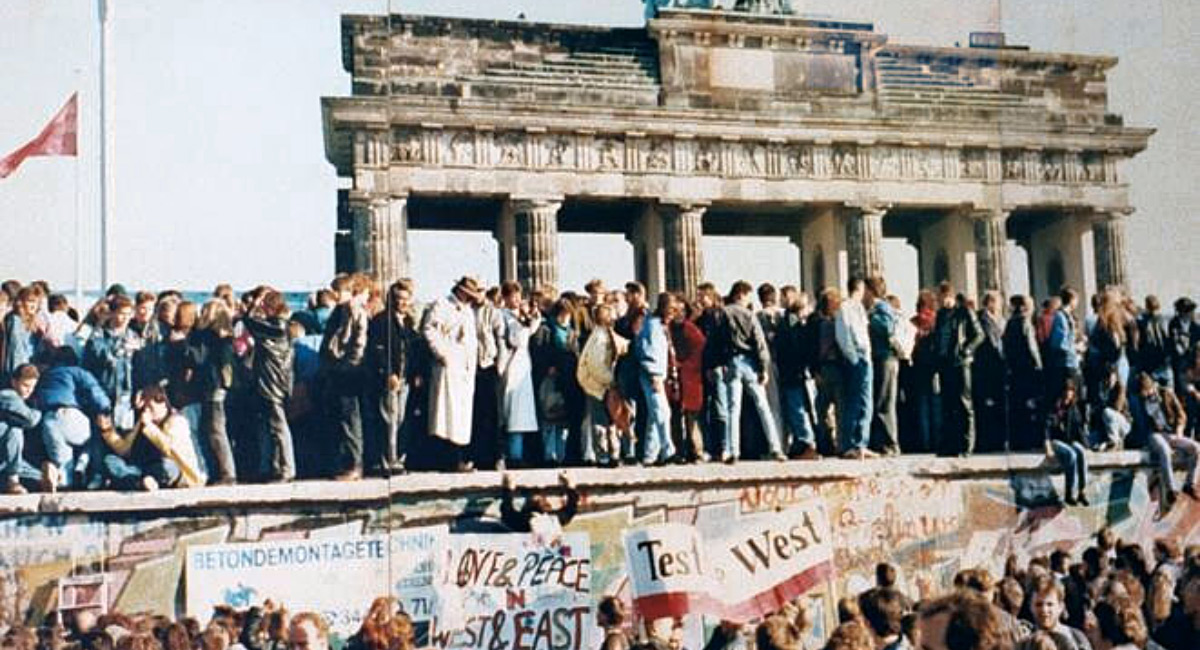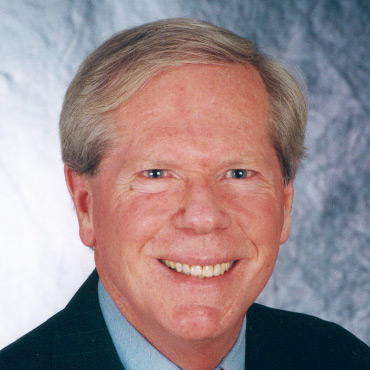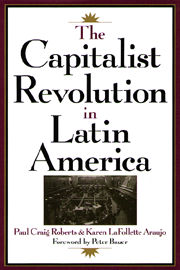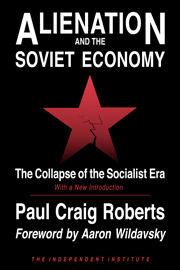For decades, Western intellectuals, whether from adulation, sympathy, naivete, or outright deception, wrote rosy accounts of the Soviet Union that have left the West unprepared for the collapse of communism. Not every account was biased toward Soviet success, but prior to Solzhenitsyn’s expose critical accounts of Soviet experience were usually dismissed as anti-communist invective. Considering the enormous literature on the Soviet Union it is worthwhile to call attention to some of the relatively few books that are important to understanding Soviet experience.
Early critical accounts, such as Boris Krutzkus’s Economic Planning in Soviet Russia (1935) and Lancelot Lawton’s An Economic History of Soviet Russia (1932), were dismissed either for being unreliable testimony of emigres or premature assessments of a new society that was just getting on its feet.
In those days, the millions of victims of collectivization and terror-famine in the 1930’s and Stalin’s later purges elicited much less protest from “the moral conscience of the West” than the occasional death of a black South African today. In the first history of Soviet collectivization and the terror-famine, The Harvest Sorrow published in 1986, Robert Conquest estimates that 7 million people died in the government-orchestrated famine alone. His previous book, The Great Terror, published in 1968 documented the immense human costs of Stalin’s reign and its roots in Leninism. Altogether, the struggle to build socialism at any cost buried 60 million people, making Hitler look like a novice compared to the holocaust of Marxism-Leninism-Stalinism.
Despite the sacrifices, the radiant future predicted by communists and their western fellow travelers never arrived. Instead, the famous central plan spews worthless goods, litters the landscape with unfinished buildings and rotting equipment, and pollutes the environment to a degree unimaginable in the West. In the Soviet Union, life expectancy has fallen dramatically.
In the mid-1930’s the “progressive” intelligentsia had convinced itself that Soviet communism was a new civilization. Sidney and Beatrice Webb, founders of the London School of Economics and Political Science, came to this conclusion in their 1,000-page book, Soviet Communism: A New Civilization (1934). Ignoring the preponderance of evidence, in 1935 socialist John Strachey concurred with the Webbs: “To travel from the capitalist world into Soviet territory is to pass from death to birth”. Certainly, millions of Soviet people experienced the opposite to be true. In the year in which Strachey penned his words, 4 million peasants from the Ukraine and Kazakhstan were held in labor camps, of whom no more than 10 percent ever saw release. Robert Conquest reports that few survived beyond 1938.
The monolithic opinion in support of Soviet communism began to crack after Kruschev’s 1956 secret speech exposing Stalin’s crimes. The speech found its way to the West, where it shook intellectuals, and to Eastern Europe where it led to uprisings and destroyed the belief in Marxism-Leninism among communists themselves.
In 1973 the publication of Aleksandr Solzhenitsyn’s epic, The Gulag Archipelago, exposed the overwhelming inhumanity of forced labor in the Soviet Union. According to a recently published book, The Turning Point (1989), by Soviet economists Nikolai Shmelev and Vladimir Popov, at the height of the Stalin era forced labor (including that of peasants tied to the land) comprised almost 80 percent of the Soviet economy. Solzhenitsyn’s depiction of institutionalized evil eventually shattered the alleged moral superiority of communism everywhere except in certain academic circles in the U.S., U.K. and Latin America. At the time of its publication, however, Solzhenitsyn’s account of Soviet experience was still controversial and President Gerald Ford refused to invite Solzhenitsyn to the White House.
Despite its prohibition in the Soviet Union itself, the book was widely circulated by samizdat or the underground press. Today, seventeen years later, The Gulag Archipelago is being published in the Soviet Union by the Moscow literary journal Novy Mir.
In 1972, Soviet historian Roy Medvedev’s samizdat book, Let History Judge, was published in the United States. Despite its many faults, this attack on Stalinism by a Soviet writer discredited Stalin and made it impossible to any longer talk about his “achievements”. The latest edition of Medvedev’s book lists Stalin’s victims in the millions and argues that the heavy Soviet loss of life in the World War II, which he says amounts to as many as 30 million, was due to Stalin’s mistakes and disregard for human life. Western scholars writing about the Soviet system have relied extensively on official Soviet statistics to convey Soviet reality. Yet Soviet statistics overestimate Soviet achievements to such an extent as to be useless for scholarly purpose. Soviet economists Shmelev and Popov devote a chapter of The Turning Point to explaining “why it is impossible to use office statistics”. The revelation that “for three decades from the end of the 1920’s through the end of the 1950’s, statistical distortions were so great that even the ordinal numbers were altered”, explains why optimistic accounts of the Soviet economy have turned out to be fairly tales.
Journalistic accounts that portray a picture of Soviet life, rather than academic works based on fraudulent statistical data, often provide more insight into Soviet reality. New York Times journalist Hedrick Smith’s The Russians (1973), Washington Post correspondent Robert Kaiser’s Russia: The People and the Power (1976) and New York Times journalist David Shipler’s Russia: The People and the Power (1983) are all engagingly written depictions of life in the Soviet Union during the pre-Gorbachev years.
The existence of the samizdat literature in the Soviet Union and the works of prominent Soviet dissidents contradicted the more favorable picture painted by so-called Western experts. Soviet voices increasingly undermined people such as U.S. sovietologist Jerry Hough, who to this day claims there was no government-induced famine in 1932-33 and continues to undercount the death toll of Stalin purges. Gorbachev’s admission that the Soviet Union lacks a rule of law flatly contradicts Harvard professor Harold Berman, who throughout the 1970’s insisted that Soviet citizens lived under the protection of a rule of law.
Today, revelations unleashed by Gorbachev and the astounding changes in Eastern Europe have stunned communist sympathizers into silence. Western Sovietology is in chaos, as daily admissions by Soviet officials and the Soviet press have struck down the fundamental belief in the success of central planning and the viability of socialism. Today, Lenin himself is under attack in the Soviet press and the debate in the Soviet Union is leading inexorably to the rejection of the Bolshevik Revolution.
The true state of the Soviet Union today may seem unbelievable to a Western public long deluded by experts. CIA and Western experts have long assumed that the Soviet economy was over half the size of that of the United States. Lately, the tune has changed, as some economists estimate the size of the Soviet economy to be no larger than one-fifth to one-third of the U.S.
Bled dry to pay for Soviet military might, Soviet consumers suffer worse hardships than most citizens of the Third World. Endemic shortages of basic commodities such as soap and meat force people to spend four to five hours a day scouring shops for daily necessities and waiting in lines. Lucky consumers live in two room apartments for a family of four. The not so lucky, 20 percent of the population according to official Soviet estimates, live in appalling one-room communal apartments which share bath and kitchen facilities with as many as twelve other households.
Medical care for the majority is reminiscent of the 19th century. Outbreaks of tuberculosis, cholera, dysentery and environmental related diseases ravage the population. According to Soviet officials, an AIDS epidemic looms as reusable syringes provide an ideal breeding ground for the virus.
Moreover, the environment throughout the country is so highly contaminated that a Ukrainian city emits one-third of the air pollution of the entire United States. The effects on the population lead officials to openly decry “the irreversible degradation of generations.”
Such dismal living standards did not come about by accident. They are the direct result of the regime’s strivings to impose a Marxian-inspired economic system on the Soviet Union. Indeed, the basis of Lenin’s claim to power lay in the establishment of a socialist economy.
Crucial to this vision was the elimination of private property and the market system of exchange. Central planning was to eliminate markets and install the direct distribution of products according to need. All of society’s production was to be controlled by the center. Planners would calculate the levels of production of every good and service and distribute the required inputs to producers and final products to consumers.
The gross output indicator, or production quotas denominated in number, volume or weight, became the linchpin of the system. There is a quota for everything—even deaths and the mortality rate permissible for each hospital are included in the plan.
In Alienation and the Soviet Economy, first published in 1971, Paul Craig Roberts argues that the Soviet economy functions as the unintended result of utopian aspirations interacting with a refractory reality. Soviet Planners themselves do not understand how their economy is organized. This is manifested in many ways. Consider, for example, the enormous unplanned Soviet budget deficit revealed in Judy Shelton’s book, The Coming Soviet Crash, published in 1989. Setting workable investment and output targets for millions of goods and services is impossible, just as economist Ludwig von Mises and F.A. Hayek predicted. In practice, planning has meant an economy of shortages and inventory buildups, as planners lack the information to make the billions of decisions necessary to balance a national economy. The plan is continually changed in an effort to adjust to previous mistakes.
Amidst an avalanche of conflicting directives raining down from the center, producers find the leeway to select the plan’s targets that maximize their incomes, while ignoring the rest. The wishes of consumers are never a consideration. Planners were unable, however, to eliminate the market. Not only would the system break down without the extensive black-market allocation of resources, planning itself functions by relying on market-type feedback.
Soviet economists understand that planning does not work. From conversations with Gorbachev’s advisors, it is clear that they realize that profitability must replace the gross output indicator as the signal of managerial success and that private property must be established in order for the Soviet economy to benefit from market incentives.
However, without a broader political context of change, even such thorough-going economic reforms would probably fail. Decades of an administered economy and political unaccountability have incrusted the Soviet Union with bureaucratic vested interests and “back channel” operations that simply make the whole system unresponsive to the General Secretary. Thus, Gorbachev’s campaign of glasnost, which opened debate on previously taboo subjects, has ended up discrediting the administrative economic system. Likewise, Gorbachev has sought to invest the Supreme Soviet with real power in order to provide a base of support for economic reforms.
All aspects of the Soviet system are under fierce attack in the Soviet Union itself. works recently published in the Soviet Union critical of the social and political system include Ukrainian novelist Vasily Grossman’s novel, Life and Fate, depicting Lenin as a ruthless fanatic, a mad revolutionary who destroyed all vestiges of freedom and democracy, and Anatoly Rybakov’s novel, Children of the Arbat, attacking Stalinism. Indeed, the most significant change is the deletion on February 7, 1990, of Article 6 from the Soviet Constitution. This provision giving the Communist Party the leading role in the development of society, was the basis for the Leninist state, which in the words of Lenin rests “directly on force, not limited by anything not restricted by any laws, nor any absolute rules.”
In the economic arena, Shmelev and Popov’s book is the most scathing condemnation of Soviet planning by top Soviet officials that has been published to date. They explain the scope of the Soviet economic crisis and the certain failure of cosmetic economic reforms. They fall short, however, by prescribing “market socialism” as the solution. Even in the age of glasnost these radical Soviet economists are unwilling to wholeheartedly embrace real market solutions.
Inside Perestroika, by Abel Aganbegyan an advisor to Gorbachev and head of the Economic Branch of the Soviet Academy of Sciences, is a useful compendium of the consensus of official thinking on the reforms as of 1989. While the author aggressively supports and promotes the half measures to reform the economy that have failed so far to yield to any improvement, his diagnosis of fundamental problems is often on target.
Aganbegyan states that the command economy “leads to the complete divorce of production from society’s needs.” Abanbegyan himself hits on the reason for the failure of the present reforms, which is the fact that perestroika fails to abolish the gross output system of production: “For the moment the administrative system is still more powerful and still influences our enterprises and society at large. This influence is exerted not only through the old economic reforms . . . but also through some of the new forms. The administrative system has temporarily invaded the newly created economic system of management.” This leads him to hint that dismantling the entire system may be necessary.
As of early 1990, reforms in the economic sphere have stalled due to their limited nature alone. Few reforms of significance are presently being implemented, other than incentives to cooperatives and long-term leasing of land to farmers, measures which themselves are confronting serious setbacks. This could change, however, as a result of the Communist Party decision on February 7, 1990, to accept private property as an ownership form consistent with the development of the Soviet economy.
Gorbachev is caught in a risky game. Without an economic transformation, the Soviet Union is a spent force in history. Yet a market economy would fundamentally alter the nature of Soviet economy. Events, such as the recent bloody uprising in Azerbaijan and the Lithuanian Communist Party’s declaration of independence from Moscow, demonstrate a political system spiraling out of control. Zbigniew Brzezinski’s 1989 book, The Grand Failure, concludes that “by the next century communism’s irreversible historical decline will have made its practice and its dogma largely irrelevant to the human condition.” Indeed, communism is already being swept away by revolutionary forces unleashed by the collapse of communist authority and the failure of central planning.











